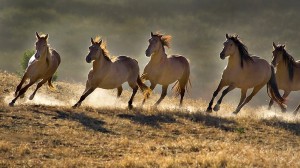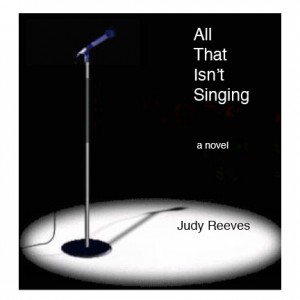The characters in my novel take a road trip from Kansas City to San Francisco. We (the characters and I) were all doing fine cruising through the wheat fields of Kansas heading toward Denver. I’ve driven that part of the country a few times so when my characters looked out the window, I could describe the landscape—the wheat fields in early spring, the far horizon, the silver silos that rose into delft blue skies. But once we left Denver and got through the Rocky Mountains past Steamboat Springs, I was in deep writer trouble.
I might as well have taken us to Czechoslovakia. (That country still existed in 1958, when my novel is set.) I had no idea what the world outside our station wagon looked like. So I opened my browser to Google maps and found my way onto Highway 40 in northern Colorado. In the “photos” view I clicked randomly on the pop up pictures that lined the yellow stripe of highway into Utah. Now I could describe the rise of the buttes out of dun colored earth, the weathered gray of old barns, the flight of a single hawk into a dome of sky that had no beginning or end.
 But it was the particular photograph of a herd of wild horses running into the wind that gave me an image I could use to express the emotional landscape of my characters on their journey. I downloaded that photograph, printed a copy and stuck it on my bulletin board above my writing desk.
But it was the particular photograph of a herd of wild horses running into the wind that gave me an image I could use to express the emotional landscape of my characters on their journey. I downloaded that photograph, printed a copy and stuck it on my bulletin board above my writing desk.
The photo of the wild horses wasn’t the first nor the only time I’ve used images to enhance or inspire my writing. A postcard I picked up at a café in Cannon Beach, Oregon featured the photograph of a guy in a band who became the model for one of my characters (the very handsome, very sexy love interest. Oh, those cheekbones!). A moody picture of a single microphone captured in a pool of light communicated a shade in the palette of emotions I needed for my protagonist—a young girl who yearns to be a singer. A collage I created with images culled from magazines was an “open sesame” into the woman who owned the fishing camp where part of the story takes place.
Images such as these speak to some intuitive understanding we have about our story or our characters. They allow us to explore characters or setting or offer insight into conflict or relationships. Sometimes they just do that “picture’s worth a thousand words” thing like my Google map photos .
I’m looking forward to the “Creating with Pictures and Words” retreat Jill Hall and I are leading this Saturday at her ranch in San Diego’s backcountry. Who knows what I’ll discover flipping through magazines looking for images that call out from the page. Who knows what will be revealed through the follow-up writing exercises. I love the surprises, don’t you?
Do you use images to enhance your writing or to delve deeper into your story or characters?


I found pictures of rural Michigan to use as references for one of my books. Now that I’m living there, I keep expecting to come across the homes and farms I created!
This tells me you are the kind of writer who totally immerses herself (himself?) in your writing. Sometimes I can’t remember whether things I write about really happened or if I made them up.
Thanks for commenting.
Yes, Judy more and more.
ONCE had a whole story inspired by one compelling picture sent to me in an email.
It’s wonderful when you can draw upon images to express emotions and such.
Enjoyed today’s post.
Thank you!
Zak.
Thanks for writing, Zak. What is it they say about a picture being worth a thousand words. We writers can take that picture and get at least a thousand words, two… three, a whole novel from a single image. Oh the stories!
Ohhhhh ya albeit mental images of things real such as the old abandoned church across from our place. Boarded up domed window. Hermetically sealed door to keep the nosy out (such as I for example). Yard so empty not even the night crew will go there to ply their trades. And one huge tree about 120′ high and wide as half the yard. Rotting eaves and roof. It’s so empty you gotta wonder what the stillness does all day….
OK Linda, you’ve just created a picture in my mind. I wonder if some characters will show up at Thursday Writers today and go inside that church, or sit (ha! I wrote “sin”) under that tree. Holy Spookiness.
Thanks for your comment, as always.
“Do you use images to enhance your writing or to delve deeper into your story or characters?”
I do now! Thanks for the inspiration.
Have fun with it, Diana, and let me know the results.
Wow. That’s almost my complete formula when I sit down to blog several times a week.
I look over event photos I’ve just taken and pick which episode I want to present. If it has been a quiet week, I rummage back through the virtual shoe boxes stuffed with photos and see what might trigger a posting.
That’s why my blog is titled CHUCKOGRAPHY, it combines Chuck + Photography.
Hi Chuck,
I love what you do with your photographs on Chuckography. You work with the images like the art of ekphrasis–narrative that tells the story of the image (or something like that). The use of one art medium (writing) to tell the story of another (your photographs). I really admire how you do it on your blog.
Also, the name of your blog, Chuckography, says to me, “geography according to Chuck” or a “geography of the world as seen by Chuck.” I like the play on words, which you always do so well.